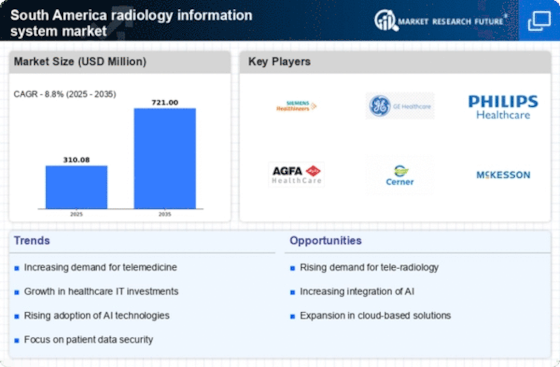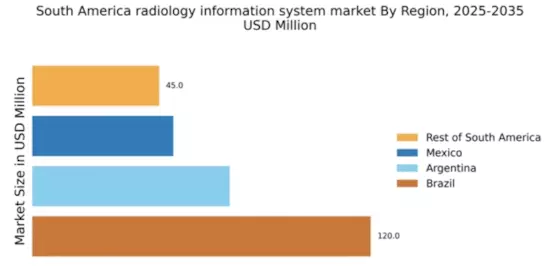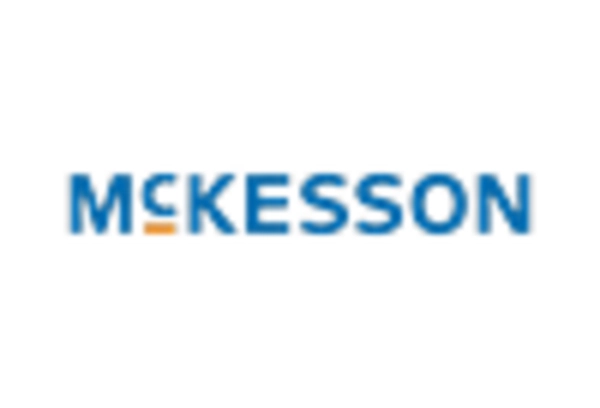Increase in Healthcare Expenditure
The increase in healthcare expenditure across South America is a significant driver for the radiology information-system market. As governments and private sectors allocate more funds to healthcare, there is a corresponding rise in investments in medical technologies, including radiology information systems. The region's healthcare expenditure is projected to grow by 5% annually, reflecting a commitment to improving healthcare delivery. This financial support enables healthcare facilities to upgrade their systems, adopt new technologies, and enhance patient care. Consequently, the radiology information-system market is poised for growth as facilities seek to optimize their operations and improve diagnostic services.
Rising Focus on Patient-Centric Care
The rising focus on patient-centric care in South America is reshaping the radiology information-system market. Healthcare providers are increasingly prioritizing patient engagement and satisfaction, which necessitates the implementation of efficient information systems. These systems facilitate better communication, streamline workflows, and enhance the overall patient experience. As a result, the demand for radiology information systems that support patient-centric approaches is likely to increase. The market is expected to witness a growth rate of around 6% over the next few years, driven by the need for systems that can effectively manage patient data and improve service delivery. This shift towards patient-centric care underscores the importance of innovative solutions in the radiology information-system market.
Regulatory Support for Healthcare Technology
Regulatory support for healthcare technology in South America plays a crucial role in driving the radiology information-system market. Governments are increasingly implementing policies that promote the adoption of advanced healthcare technologies, including radiology information systems. For instance, initiatives aimed at improving healthcare infrastructure and access to medical services are likely to bolster the market. The South American healthcare sector is projected to grow at a CAGR of 8% from 2025 to 2030, indicating a favorable environment for technology adoption. This regulatory backing not only encourages investment in radiology information systems but also enhances the overall quality of healthcare services, thereby propelling the market forward.
Growing Demand for Diagnostic Imaging Services
The rising demand for diagnostic imaging services in South America is a pivotal driver for the radiology information-system market. As healthcare providers increasingly recognize the importance of accurate diagnostics, the need for advanced imaging technologies has surged. This trend is reflected in the projected growth of the diagnostic imaging market, which is expected to reach approximately $5 billion by 2026. The expansion of healthcare facilities and the increasing prevalence of chronic diseases necessitate efficient radiology information systems to manage patient data and streamline workflows. Consequently, the radiology information-system market is likely to experience significant growth as healthcare providers invest in innovative solutions to enhance diagnostic capabilities.
Technological Advancements in Imaging Modalities
Technological advancements in imaging modalities are significantly influencing the radiology information-system market in South America. Innovations such as 3D imaging, digital radiography, and advanced MRI techniques are enhancing diagnostic accuracy and efficiency. As these technologies become more accessible, healthcare providers are increasingly integrating them into their practices, necessitating robust radiology information systems to manage the influx of data. The market for imaging modalities is expected to grow by approximately 7% annually, further driving the demand for sophisticated information systems. This trend suggests that the radiology information-system market must adapt to accommodate the evolving landscape of imaging technologies.


















Leave a Comment